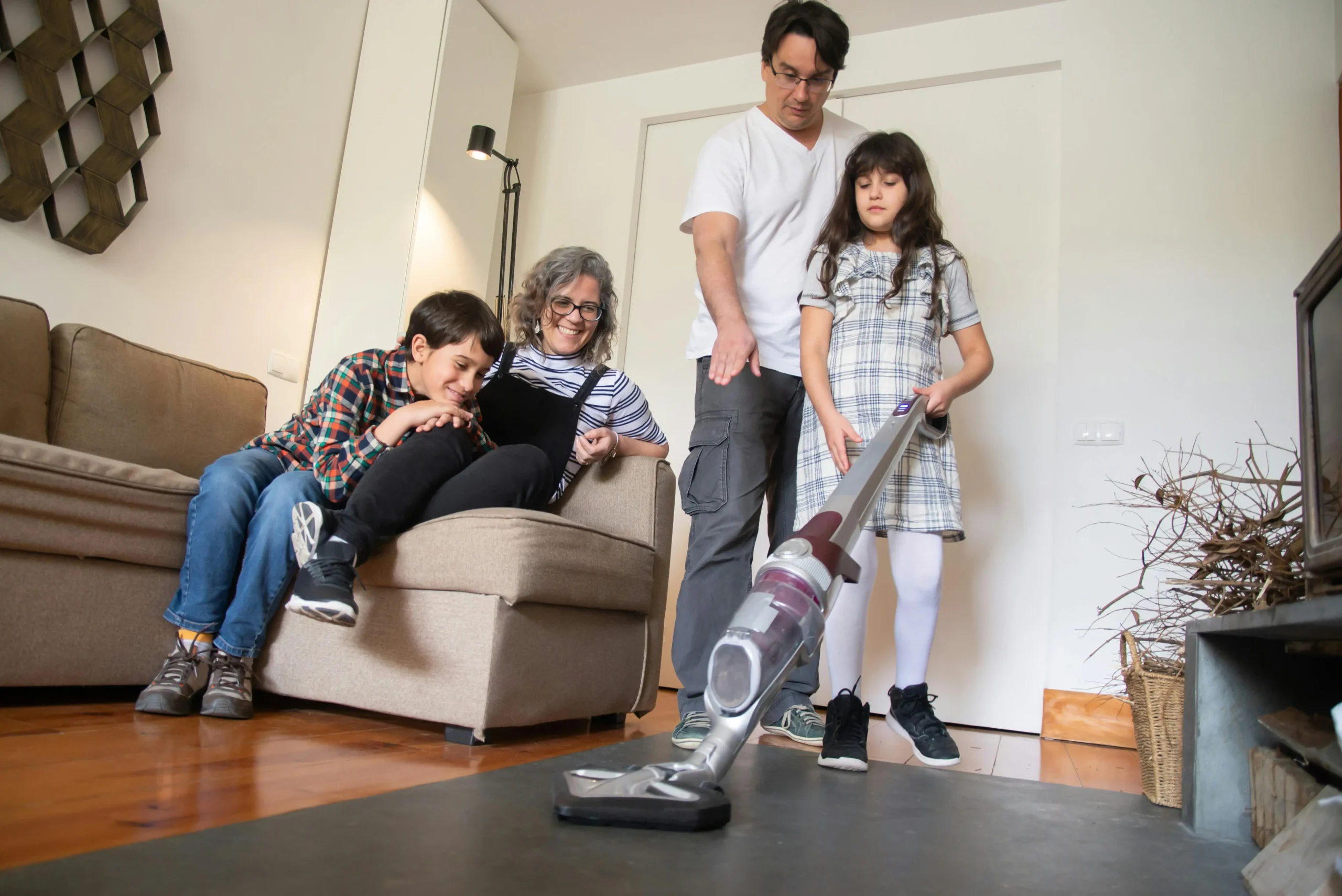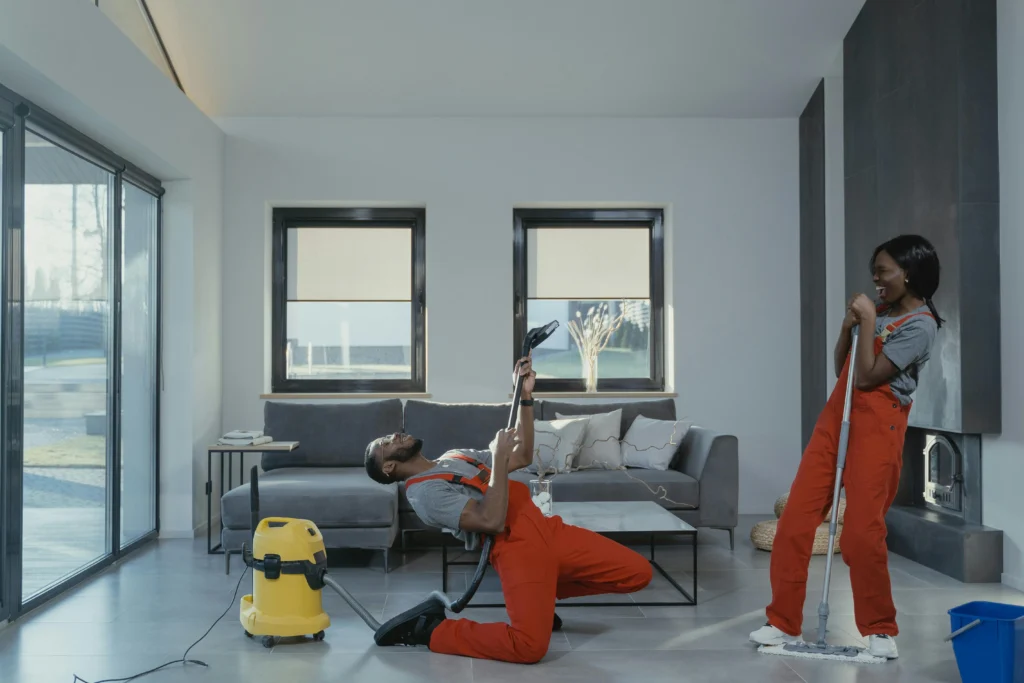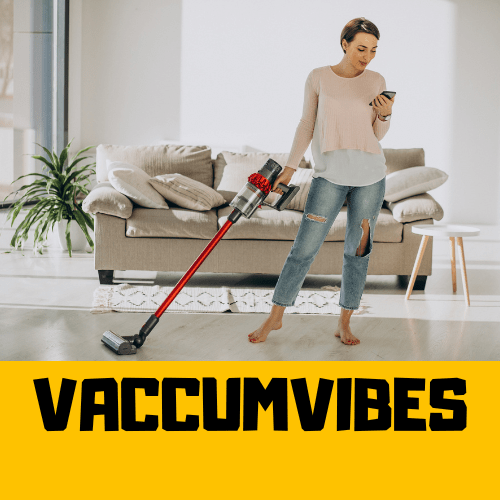
Vacuum cleaners have proved their efficacy in efficiently eliminating the finest dust particles, embedded dirt, debris, and other airborne contaminants from various surfaces but their higher noise output has created a hassle for modern homeowners and cleaning enthusiasts. While talking about how operational differences impact noise of vacuum cleaners we should consider factors such as motor power, brush design, suction technology, build quality, and filtration systems influencing user experience and comfort.
When as a modern homeowner you understand how various operational differences impact noise of vacuum cleaners, you can conveniently select vacuum cleaners that align with your noise preferences. This article delves into how various operational differences impact noise of vacuum cleaners, supported by statistics and specific models in 2024.
Table of Contents
What makes a vacuum cleaner noisy?

A plethora of factors add to the noise intensity and vibration emitted by both high-end and mid-range vacuum cleaner models. The primary determinant for noise generation can be regarded as motor power, where higher-wattage motors are bound to emit louder noise levels. The preexisting statistical analysis has hinted towards a strong positive correlation between motor power and noise output and additionally, the suction mechanism equipped in the vacuum cleaner plays the second role.
Vacuum cleaner models equipped with cyclonic suction have been witnessed to emit more noise compared to those featuring bagged systems, majorly as a consequence of airflow dynamics. In addition to this, differences in filtration efficiency significantly impact the intensity of noise, with the highly efficient and advanced HEPA filters potentially dampening noise by streamlining airflow turbulence underscoring the necessity of considering operational factors in regulating noise pollution from vacuum cleaners.
To sum up, a combination of motor power, filtration efficiency, suction mechanism, and design features collectively control the degree of noise emitted by modern-day vacuum cleaners.
Motor Power
When your vacuum cleaner model comes equipped with robust motor power you will probably experience higher noise output as various studies conducted globally on vacuum cleaners with varying motor powers hinted towards a direct proportional relationship between motor power and noise levels. Most vacuum cleaner models with motor power beyond 2000 watts generated significantly higher degrees of noise and vibration than those with 1500 watts of motor power.
Vacuum cleaner models such as the PowerForce 2000 and the EcoClean 1500 illustrate how motor power directly impacts noise output. The PowerForce 2000, boasting a powerful 2000W motor, has been proven to emit higher noise levels compared to the EcoClean 1500, which needs a 1500W motor to operate underscoring the positive correlation between noise production and motor power.
Suction Technology
To reduce the degree of noise and vibration during vacuum cleaning sessions, always opt for cyclonic vacuum cleaners equipped with efficient suction technology. In this case, the CycloneMax Pro and the Standard SuctionMaster can be considered to portray how suction technology significantly impacts noise output. The CycloneMax Pro equipped with advanced cyclonic suction technology emits lesser degrees of noise and vibration compared to the Standard SuctionMaster which fails to minimize operational noise.
Filtration System

When discussing how operational differences impact noise of vacuum cleaners, vacuums equipped with HEPA filters generate special mention of emitting lower noise due to enhanced airflow control. The PureAir HEPA 3000, featuring a high-efficiency particulate air (HEPA) filter, tends to produce lower noise levels than the BasicFilter Sweep, equipped with ordinary filtration highlighting the role of filtration systems in dampening noise during vacuuming.
Brush Design
Vacuum cleaners that come with adjustable brush settings emit differing degrees of noise based on the plethora of surfaces of modern homeowners. For example, vacuum cleaners emit louder noise while performing on carpets than on hard surfaces due to higher degrees of friction.
In this regard, let’s consider vacuum cleaners with different brush designs, such as the TurboGlide Elite and the Standard Brush Plus, which exhibit different degrees of noise when used on different surfaces. Equipped with adjustable brush settings, the TurboGlide Elite, generates varying noise levels based on surface type, while the Standard Brush Plus emits consistent noise with lesser intensity regardless of the surface being cleaned.
Body Material and Design
It has been reported that vacuum cleaners engineered with noise-absorbing materials and boasting an ergonomic design generate lower noise levels and thus are gaining widespread popularity among modern homeowners. Models like the WhisperQuiet 4000 and the ClassicClean 1000 portray the influence of coupled with build quality design on noise output.
The WhisperQuiet 4000, constructed with noise-dampening components and featuring a sleek design, emits lower noise levels compared to the ClassicClean 1000, which features a bulky design and is not equipped with high-end noise-absorbing materials.
How Operational Differences Impact Noise of Vacuum Cleaners-Conclusion
It is evident that operational differences impact noise of vacuum cleaners significantly with chief factors being motor power, filtration systems, suction technology, brush design, and build quality. Vacuum cleaner models equipped with cyclonic suction have been witnessed to emit more noise compared to those featuring bagged systems, majorly as a consequence of airflow dynamics.
In addition to this, differences in filtration efficiency significantly impact the intensity of noise, with the highly efficient and advanced HEPA filters potentially dampening noise by streamlining airflow turbulence underscoring the necessity of considering operational factors in regulating noise pollution from vacuum cleaners. Now that you understand these relationships you should bring home a targeted vacuum cleaner model that aligns with their noise preferences and also warranties of optimal cleaning performance.
FAQs
What is the acceptable noise level of a vacuum cleaner?
The acceptable noise level of a vacuum cleaner for most residential settings ranges below 70 decibels (dB) and varies depending on environmental factors coupled with individual preferences as it allows for hassle-free cleaning without causing significant disturbance to occupants and nearby residents. However, some individuals having toddlers or elderly persons in their homes or residing near noise-sensitive environments such as libraries or healthcare centers, go for even quieter vacuum cleaners, where noise levels range below 65 dB.
What are some quiet vacuum cleaner models?
Some quiet vacuum cleaner models gaining widespread popularity in recent years and featuring advanced motor technology coupled with sound insulation for reduced noise levels include the Shark Navigator Lift-Away Professional NV356E, Miele Complete C3 Marin Canister Vacuum, Dyson V11 Torque Drive Cordless Vacuum, Bosch Relaxx’x ProSilence 66 Bagless Vacuum Cleaner and Electrolux UltraSilencer EL6986A Canister Vacuum.
How can I reduce the noise of my vacuum cleaner?
To reduce the noise of your vacuum to the best possible extent to preserve a serene living room atmosphere, purchase models specifically designed for quiet operation and set a strict and regular maintenance routine such as replacing filters and ensuring proper assembly abiding by the manufacturer’s guidelines. You can also try investing in noise-reducing accessories or arrange vacuuming sessions during off-peak hours to decrease noise levels.

For the past five years, I’ve been engaged as an SEO content writer, specializing in crafting engaging blog posts. My focus lies in meticulously exploring and evaluating household cleaning appliances, particularly those integrated with cutting-edge and emerging technologies.
